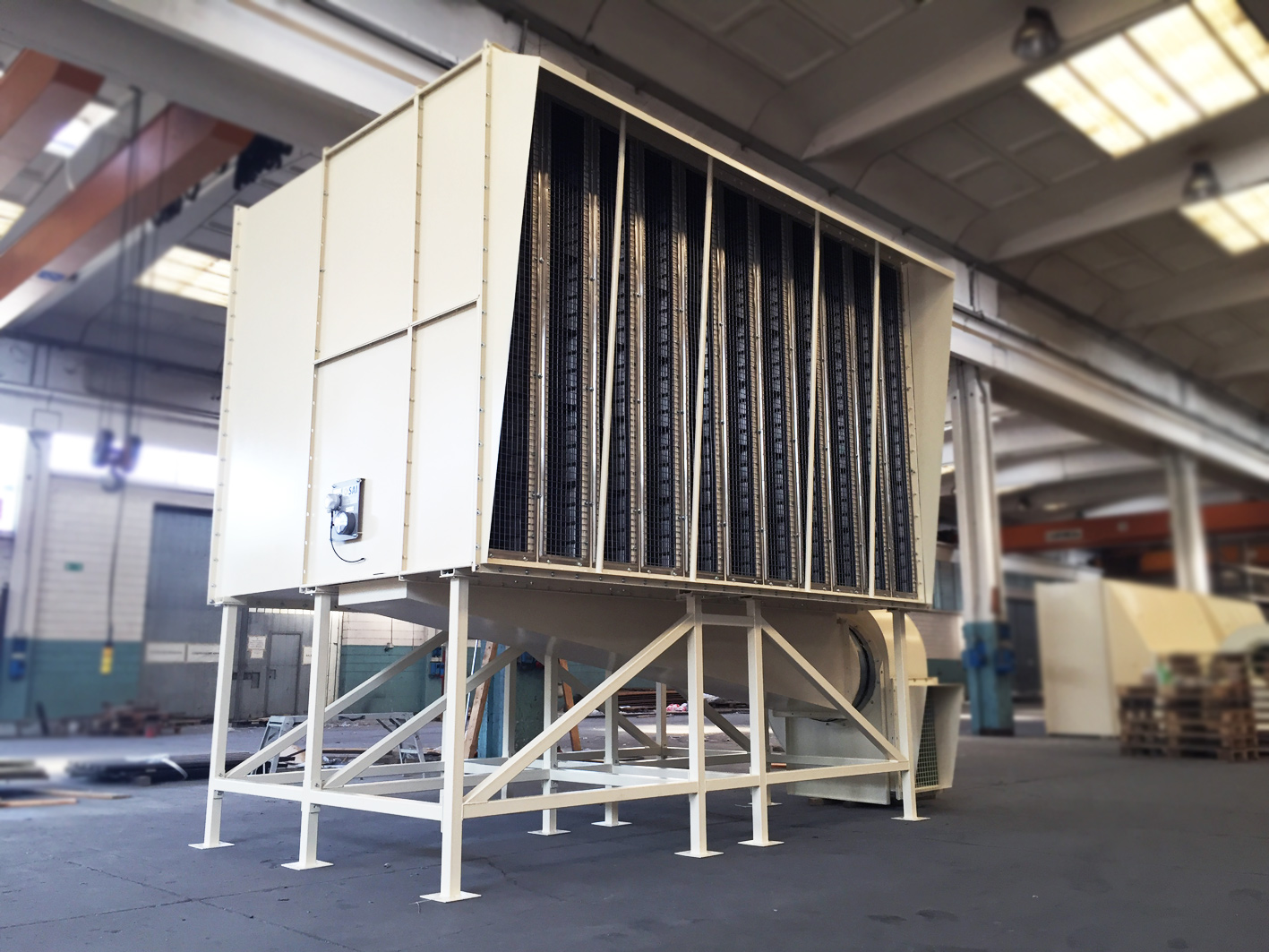The inertial filters manufactured by Filtrotenica Italiana are a high efficiency filter without mobile components, exploiting the inertia principle. On these basis Filtrotenica Italiana developed a range of filters, which combines important construction and functional advantages, particularly:
> high and continuous efficiency with high working reliability (characteristic documented by several Excellence Certificates issued by our customers);
> the capacity to treat large air volumes in heavy conditions (i.e. desert environment);
> minimum installation dimensions;
> low and constant pressure drops;
> continuous working;
> application and use versatility;
> easy installation;
> low environmental impact, the filters elements are cleaned, not replaced and are completely recyclable.The filter is normally defined self-cleaning as the sands divided from the flow, are collected in a suitable duct and ejected continuously by a secondary fan. Anyway it is good rule, with marine/salty environment, with particular moisture, sand storm, etc. to provide periodically for an inspection of the filtering cells and possibly for a cleaning of these.
Working principle
The filter is defined “inertial” because, if an air flow containing the dust particles or other impurities undergoes a direction change, the particles are subject to the force of inertia which makes them follow the direction of the original motion. The difference of kinetic energy that the particles with different masses have, helps the separation of the impurities from the air flow. The filter is formed by one or more assembled modular inertial cells, through which the dusty air undergoes an acceleration and a sudden change of direction. The air is separated from the dust crossing special slots. The dusts highly accelerated, maintain a rectilinear direction, go inside the cell and are conveyed in a collecting duct. The dusts, are, then, sucked and ejected by a secondary fan. Such fan, duly designed*, is usually supplied with the filter. The secondary fan has to be suitable to transport dusty air and must have an air flow of 10% (about) of the primary fan air flow.* The fan is designed to discharge directly the dusts in atmosphere, without duct on the outlet.
Inertial Filters












